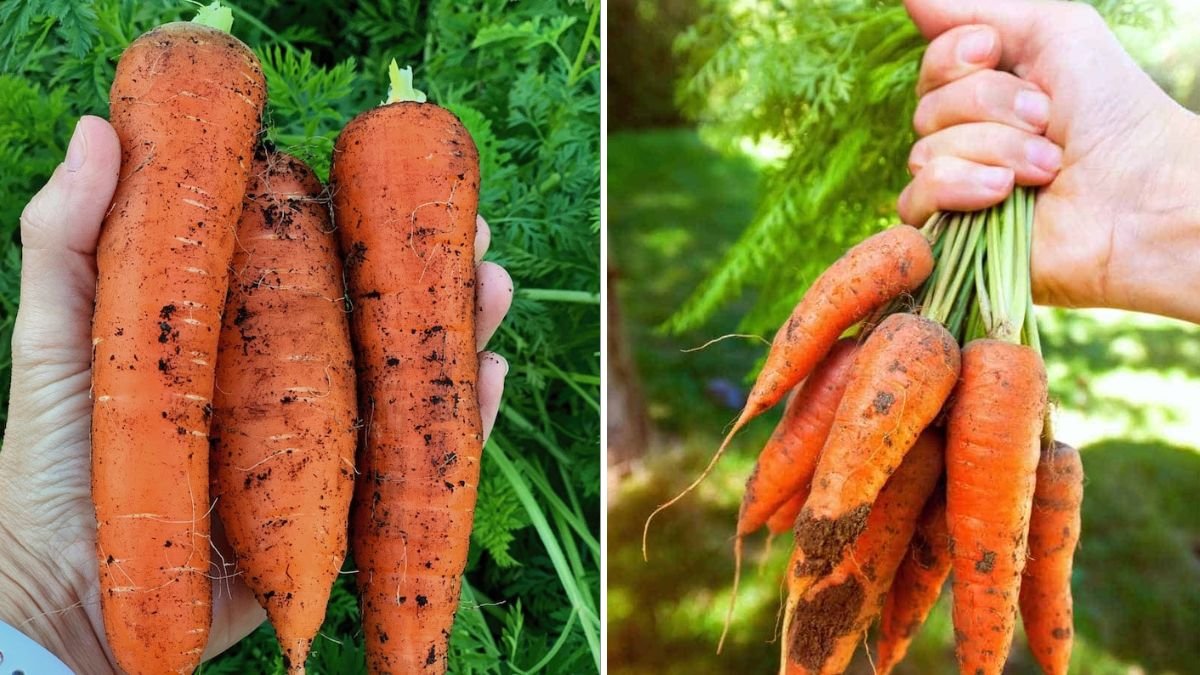Get Perfectly Sweet, Crisp Carrots Every Time—No Guesswork Required!
Carrots are one of the most satisfying root vegetables to grow—tasty, healthy, and fun to pull from the ground like buried treasure. But if you’ve ever yanked one up too soon (and found a stubby, underdeveloped root) or waited too long (and ended up with woody, bitter carrots), you know timing is everything.
But here’s the challenge: carrots grow underground, so how do you know when they’re ready to harvest without pulling them up and risking waste?
Good news: experienced gardeners use a combination of visual clues, timing, touch, and smart tricks to harvest their carrots at just the right time—no guesswork needed. This guide will walk you through all the proven methods to check carrot maturity without disturbing your crop, so you can enjoy crisp, sweet carrots every time.
Why It Matters: Timing Is Everything
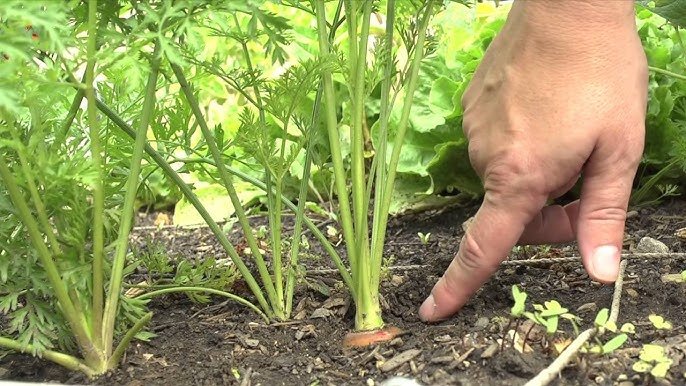
Harvesting carrots at the right moment is crucial for:
- Flavor: Young carrots are sweet and tender; older ones become tough and bitter.
- Texture: Perfectly timed carrots are crisp and juicy.
- Storage: Mature carrots store better than immature ones.
- Yield: Early pulling can reduce your harvest, while late pulling can result in overgrown, cracked roots.
Know Your Variety (First Step to Smarter Harvesting)
Before we dive into the visual and tactile clues, it’s important to know which variety of carrot you’re growing, because:
- Some carrots mature in as little as 55 days (like ‘Little Finger’).
- Others may take up to 85 days (like ‘Imperator’ or ‘Danvers’).
Check your seed packet for the “days to maturity” and use that as a starting point.
Common Carrot Varieties & Their Maturity:
| Variety | Days to Maturity | Notes |
|---|---|---|
| Little Finger | 55-65 days | Short, snappy, small spaces |
| Nantes | 65-70 days | Sweet, cylindrical shape |
| Danvers | 70-75 days | Classic tapered carrots |
| Imperator | 75-85 days | Long and slender; supermarket look |
| Chantenay | 65-75 days | Short and fat; good for clay soil |
Method 1: Track the Days
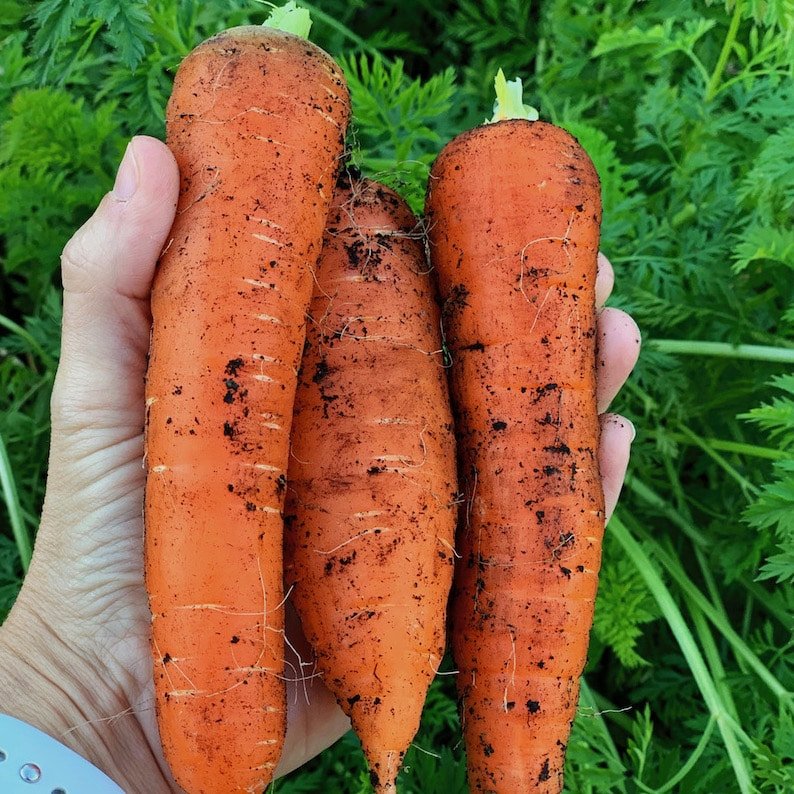
One of the most reliable methods is simply counting the days since you planted your carrot seeds.
- If you planted on April 1st, and your variety matures in 70 days, start checking for harvest signs around mid-June.
- Use a garden journal or calendar to track your sowing dates.
Pro Tip: Always allow a 7–10 day buffer on either side of the maturity window depending on weather conditions and soil quality.
Method 2: Look at the Shoulder
This is the most popular way to check carrot readiness without pulling them.
What to Look For:
- Gently brush away the top layer of soil at the base of the green foliage.
- You’ll see the “shoulder” of the carrot where it meets the stem.
- When the top of the root is about ¾ to 1 inch in diameter, it’s likely ready.
Visual Clues:
- A smooth, round shoulder means good maturity.
- If the shoulder is pale orange, it’s still developing.
- A bright orange or deep color indicates ripeness.
Pro Tip: Use your fingers to carefully expose the top, not a trowel, to avoid damage.
Method 3: Examine the Leaves
Carrot tops (the leafy greens) can tell you a lot:
Leaf Clues:
- Lush, bushy tops indicate active growth.
- When leaves begin to slow their growth or flop slightly, the carrot is nearing full maturity.
- If tops start yellowing or wilting, the root may be past its prime or conditions are stressing the plant (heat, drought, pests).
Don’t confuse carrot leaf dieback from age with disease—check for spots, mushiness, or insects if unsure.
Method 4: Feel the Root Girth
You can gauge the carrot’s size underground by gently squeezing the top part of the root.
How to Do It:
- Feel just below the green top where the carrot starts.
- If it feels thick, firm, and rounded, it’s likely mature.
- If it’s still thin, soft, or flexible, it needs more time.
Pro Tip: Try this on multiple plants to compare sizes.
Method 5: Consider the Weather & Growing Conditions
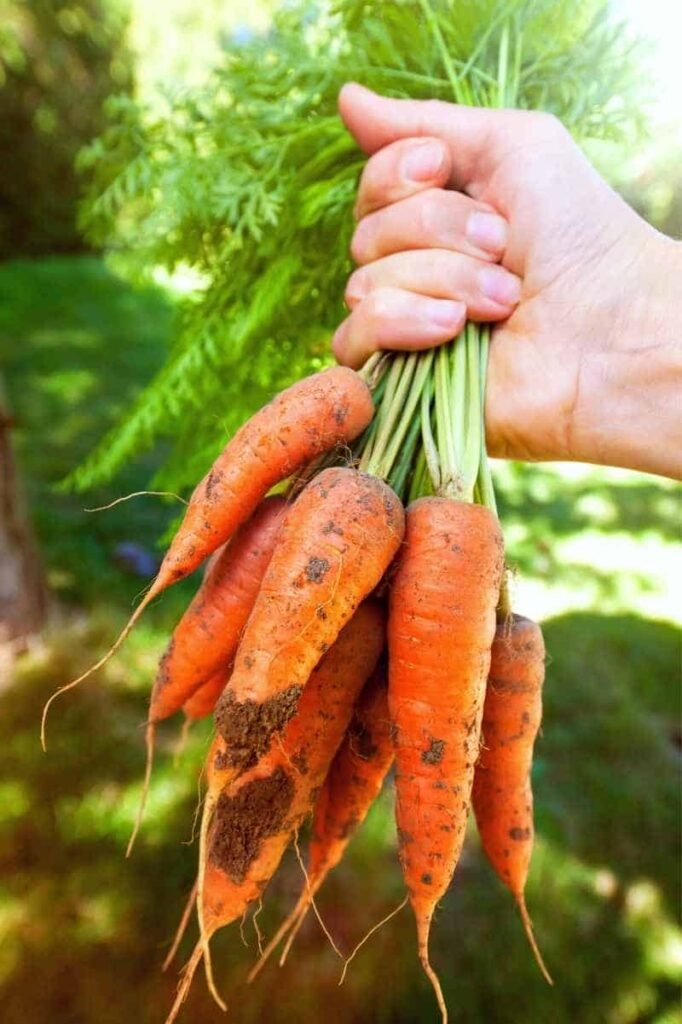
Carrots grow best in cool to mild temperatures (60–75°F). When temperatures rise or the soil dries out:
- Growth slows.
- Roots may crack or become bitter.
- The sugars convert into starch (reducing sweetness).
If a heat wave is coming, consider harvesting early to avoid quality loss.
Pro Tip: For the sweetest carrots, harvest early in the morning or after a cool night—this is when sugar content is highest.
Bonus Method: Staggered Sowing for Staggered Harvests
Want to make harvesting easier? Try succession planting—sowing a few rows every 2–3 weeks. This way, you don’t have to harvest all your carrots at once, and you’ll have a continuous supply of ready-to-pick roots.
How to Harvest Without Damaging the Root
Once you’re confident your carrots are ready:
- Loosen the soil around the carrot using a fork or trowel.
- Grip the foliage firmly at the base.
- Gently wiggle and pull straight up.
- Brush off soil—don’t wash if you plan to store them long-term.
Tip: For heavy or clay soils, never yank hard—this could snap the carrot in half. Loosening the soil first is key.
Signs You’ve Waited Too Long
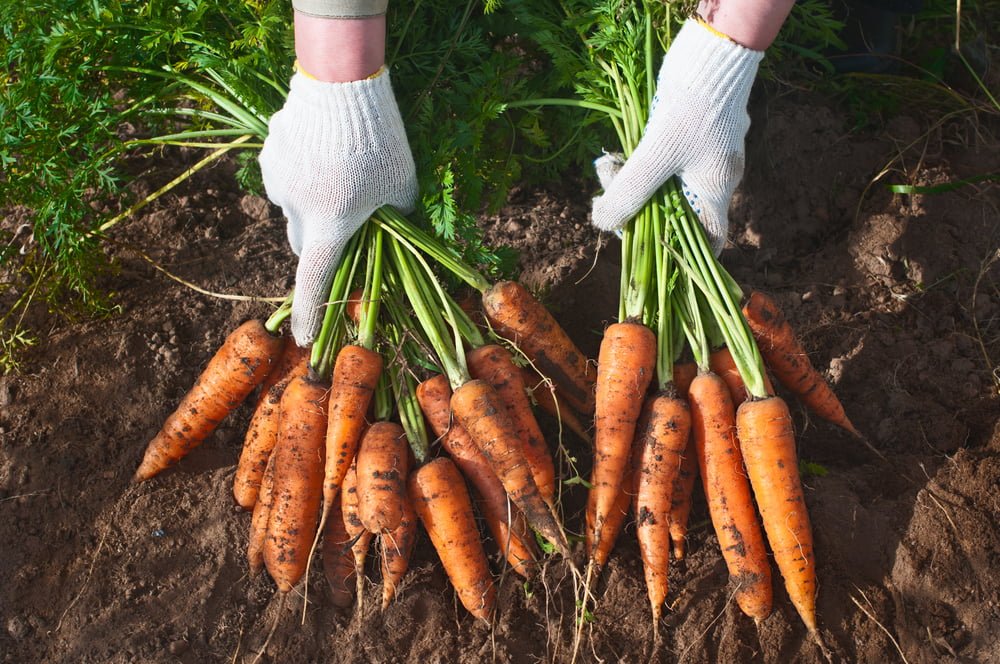
Even if you missed the perfect harvest window, don’t panic. But be aware of these late signs:
- Carrot tops cracking above ground: The root has overgrown.
- Forked or split roots: Too much water late in the season.
- Hard, woody texture: Left in the ground too long.
- Bitterness: Common in carrots exposed to hot weather or aged past peak.
If this happens, don’t toss them—woody carrots can still be used in soups or broths where texture isn’t an issue.
Storing Your Harvest
After harvest, here’s how to store carrots for long-term freshness:
- Remove tops: They draw moisture from the root.
- Do not wash if storing long-term—brush off soil instead.
- Refrigerate in a plastic bag or container in the crisper drawer.
- Store for up to 4 weeks or longer if conditions are ideal.
For long-term storage:
- Store in damp sand or sawdust in a cool cellar or garage.
- Keep around 32–40°F with high humidity.
Extra Tips for Sweeter, Healthier Carrots
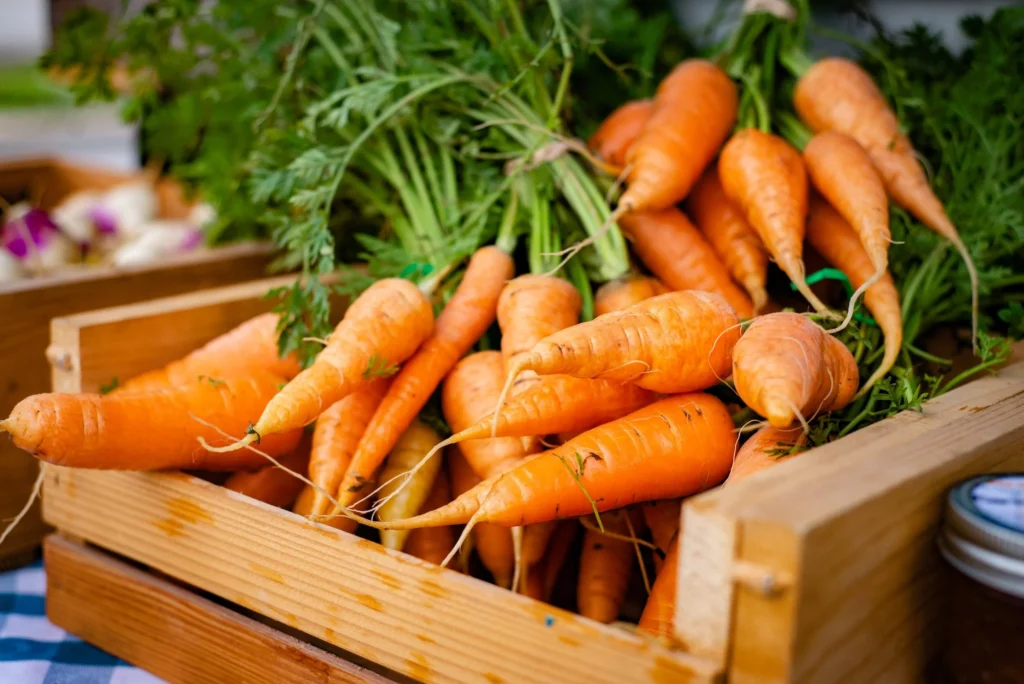
- Thin seedlings early to 2 inches apart to allow proper root development.
- Keep the soil consistently moist to prevent cracking.
- Mulch to retain moisture and cool the soil.
- Avoid over-fertilizing with nitrogen—it encourages leafy tops, not root growth.
Final Thoughts: Trust Your Garden Instincts
Learning when to harvest carrots without pulling them is part science, part art, and part gardener’s intuition. The more you grow, the more you’ll develop an eye (and feel) for perfect carrot timing.
To recap:
- Know your variety and its maturity range.
- Check the shoulder size and color.
- Feel the girth just below the foliage.
- Observe the leaf health and growth pace.
- Consider the weather and soil conditions.
With a little practice, you’ll be harvesting flavorful, vibrant carrots at the peak of perfection—without ever pulling a “test” carrot again.
Want a printable Carrot Harvest Checklist or Companion Planting Guide? Just let me know, and I’ll create one just for you!
